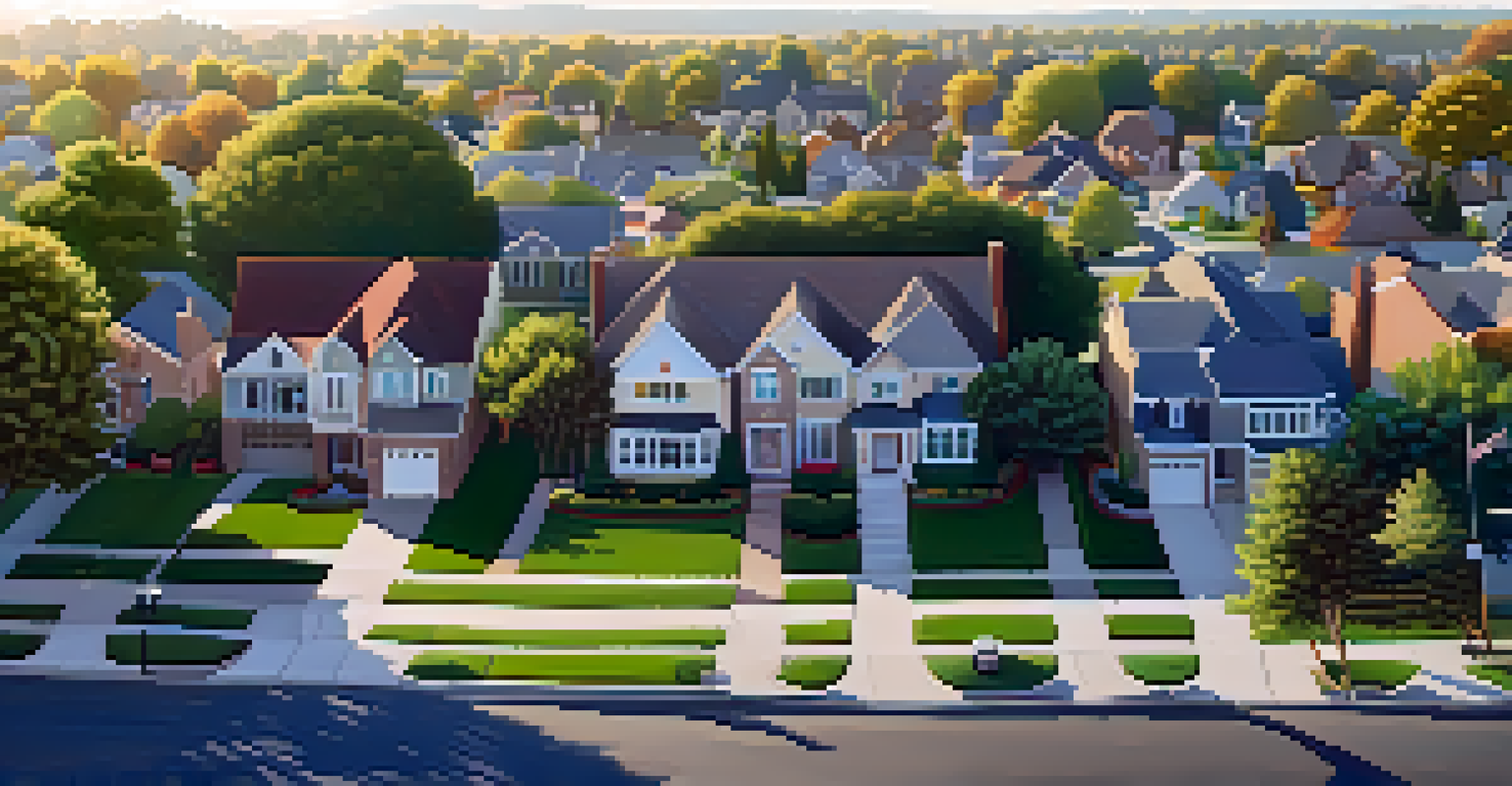Home Insurance Basics: What Every Homeowner Should Know

Understanding What Home Insurance Covers
Home insurance is designed to protect your home and belongings from various risks. This typically includes coverage for damages caused by fire, theft, or natural disasters. It also often covers liability in case someone is injured on your property, which is crucial for any homeowner.
Insurance is not a product; it’s a promise to pay when things go wrong.
Think of home insurance as a safety net that helps you recover from unexpected events. For example, if a storm damages your roof, your insurance can help cover the repair costs. In essence, it provides peace of mind, knowing that you have financial support when you need it most.
However, not all policies are the same. Some may offer more extensive coverage than others, so it's important to read the fine print and understand what is included and what might be excluded.
Types of Home Insurance Policies Explained
There are several types of home insurance policies, each catering to different needs. The most common is the HO-3 policy, which covers your home and personal property against a wide range of perils. On the other hand, an HO-1 is a basic policy that only covers specific risks.

Choosing the right policy can feel overwhelming, but it boils down to your unique situation. For instance, if you live in an area prone to earthquakes, you might want a policy that includes earthquake coverage. Think of it like choosing a car insurance policy that fits your driving habits.
Home Insurance Basics Explained
Home insurance protects your property from risks like fire, theft, and natural disasters, while also providing liability coverage.
Be sure to assess the coverage options based on your home’s age, location, and personal belongings. This way, you can select a policy that truly meets your needs.
How Much Coverage Do You Really Need?
Determining how much coverage you need is a key part of the home insurance process. A common rule of thumb is to ensure your policy covers the full replacement cost of your home. This means you can rebuild your home in the event of a total loss.
The best way to predict your future is to create it.
To calculate this, take into account the cost of materials, labor, and any unique features your home has. For example, if your home has custom woodwork or high-end appliances, these should be factored into the coverage amount.
Additionally, consider your personal belongings, such as electronics and furniture. By taking the time to accurately assess your needs, you can avoid being underinsured, which can leave you in a tough financial spot during a claim.
The Role of Deductibles in Home Insurance
A deductible is the amount you'll pay out-of-pocket before your insurance kicks in. Choosing the right deductible can impact your premium; typically, a higher deductible means a lower premium. However, it also means you'll need to pay more yourself if you file a claim.
For instance, if your deductible is set at $1,000 and you experience $5,000 in damages, you would pay the first $1,000 while your insurance covers the remaining $4,000. It's a balancing act between what you can afford to pay upfront and your monthly budget.
Choosing the Right Policy Matters
Selecting the appropriate home insurance policy requires understanding the different types available and assessing your unique needs.
Take the time to evaluate your financial situation and decide what deductible works best for you. Consider both your comfort level with risk and your ability to cover costs in case of an emergency.
Factors That Affect Your Home Insurance Premium
Several factors can influence your home insurance premium, including your home's location, age, and construction type. For example, homes in areas prone to natural disasters may have higher premiums due to increased risk. Similarly, older homes may require more maintenance, leading to higher costs.
Additionally, your personal claims history and credit score can also play a role in determining your premium. If you've made multiple claims in the past, insurers may see you as a higher risk, which can increase your rates.
To potentially lower your premium, consider making home improvements, such as updating electrical systems or installing a security system. These upgrades not only enhance your home’s safety but can also make you eligible for discounts.
Understanding Exclusions in Your Policy
Exclusions refer to specific situations or events that your policy does not cover. It's crucial to be aware of these, as they can leave you vulnerable in certain scenarios. Common exclusions include damage from floods, earthquakes, or regular wear and tear.
For example, if you live in a flood-prone area, you may need to purchase a separate flood insurance policy. This is similar to having a car insurance policy that excludes coverage for certain types of damage, requiring additional plans to fill those gaps.
Regular Policy Reviews Are Crucial
Regularly reviewing your home insurance policy ensures it meets your current needs and can identify potential savings or necessary adjustments.
Always review your policy documents to understand what is excluded and consider additional coverage options if needed. Being informed can help you make better decisions about your home’s protection.
The Importance of Regularly Reviewing Your Policy
Life changes, and so should your home insurance policy. It's a good idea to review your policy annually or after any significant changes, like renovations, a new purchase, or a change in your financial situation. This ensures your coverage reflects your current needs.
For instance, if you've added a new room or upgraded your kitchen, you might need to adjust your coverage amount to account for these improvements. Think of it as updating your wardrobe—what worked last year may not fit your current style or needs.

Regular reviews can also help you identify potential savings. As you make improvements or changes, you may qualify for discounts that weren’t available before. Keeping your policy up-to-date ensures you’re adequately protected without overpaying.